NSW bushfires: RFS backburning fanned megafire which claimed homes; smog to blanket Sydney
Homes and buildings were destroyed on Sunday after firefighters lost control of backburning, RFS reveals.
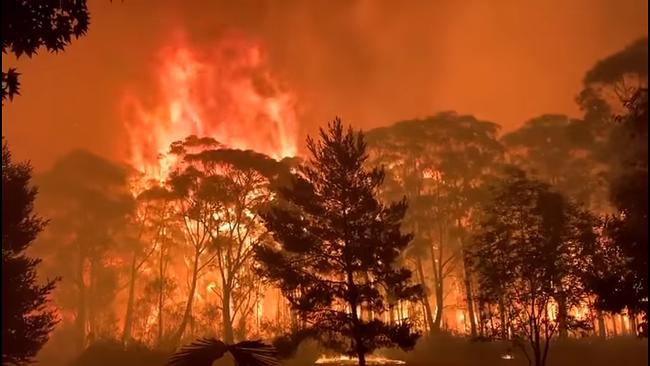
Backburning efforts by the NSW Rural Fire Service resulted in the damage or loss of up to 20 buildings northwest of Sydney, the service has acknowledged.
Firefighters on Sunday were trying to prevent the spread of the huge Gospers Mountain blaze when their controlled operation breached containment lines, a spokeswoman said.
The affected properties are thought to be in the Mount Wilson and Bilpin areas in the Blue Mountains area west of Sydney.
“There was backburning in the area and unfortunately due to the conditions they’re burning in, it’s taken one ember to cross over the wrong side and that’s where it took a run and it was escalated to emergency warning and then we have had reports of homes lost in the area,” an RFS spokeswoman told AAP on Monday.
RFS Commissioner Shane Fitzsimmons earlier said some of the affected properties may belong to local service members.
As well as damaging or destroying dozens of buildings the sprawling “megafire”, other fires, and backburning have seen Sydney once again blanketed with smoke haze ahead of an intense heatwave.
‘If we don’t backburn there’s nothing to stop this’
The Gospers Mountain fire — which is creeping towards 400,000 hectares in size — stretches from the Lithgow area in the west, through the Hawkesbury area and towards the Central Coast in the east.
It was upgraded to “emergency” level on Sunday when flames up to 70m high tore through the bush.
Fresh emergency warnings
That emergency warning was reinstated on Monday afternoon, and also placed on a nother bushfire — the nearby 1600-hectare fire at Palmers Oaky — on Monday afternoon.
“If you are in the Wolgan Valley area, it is too late to leave,” the NSW Rural Fire Service warned on Monday. “Seek shelter as the fire approaches.”
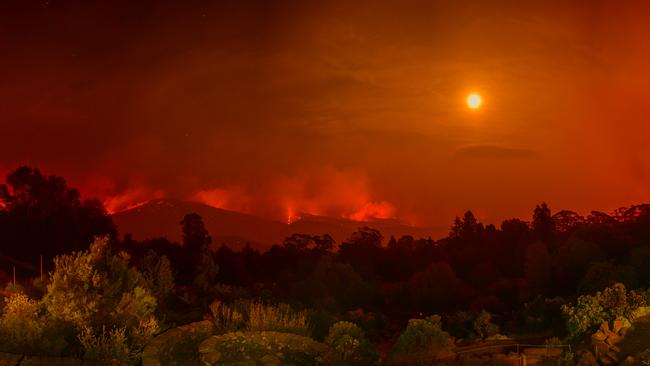
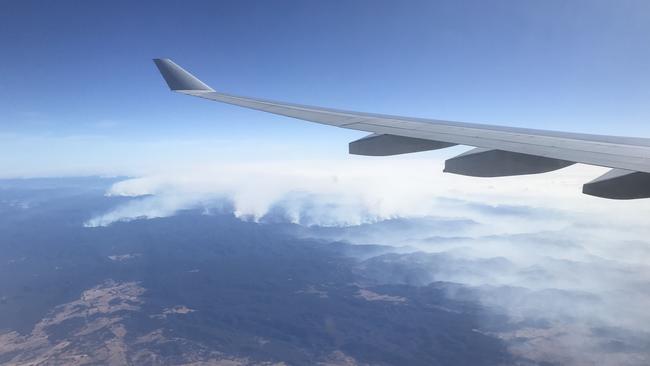
The RFS spokeswoman says the backburning losses are “absolutely unfortunate” but she added such operations were critical to help contain the vast fire before hotter conditions arrive later this week.
“If we don’t (backburn) then there’s nothing to stop this fire, and there’s heavily residential areas that it will look towards moving towards over the next days and weeks,” she said.
EMERGENCY WARNING - Gospers Mountain (Lithgow & Hawkesbury LGA)
— NSW RFS (@NSWRFS) December 16, 2019
Fire increasing. If you're in Wallerawang, Lidsdale & Blackmans Flat area, it's too late to leave. Seek shelter as fire approaches. Protect yourself from heat of fire. #nswrfs #nswfires #alert https://t.co/HLT0uJZ5x9 pic.twitter.com/LTwMCLRDRX
Advice - Kings Highway, Bungendore
— NSW RFS (@NSWRFS) December 16, 2019
A fire is burning in grassland and is moving in a north westerly direction towards Tarago Road. Crews are on scene, and will be assisted by waterbombing aircraft. #nswrfs #nswfires
RFS commissioner Shane Fitzsimmons said firefighters were trying their best to help the local community and had been “executing some very sensible, some very risky, some very challenging, decisions”.
“Unfortunately things don’t always go to plan and we’ve seen how quickly things can change and how destructive the consequences can be,” he told ABC TV.
Firefighters worked overnight to contain the blaze around Mt Wilson, Mt Tomah and Berambing.
Power cuts
Endeavour Energy on Monday said 450 customers were without power in the upper Blue Mountains after the Gospers Mountain bushfire damaged powerlines. Affected townships include Bilpin, Berambing, Mount Wilson, Mount Tomah and Mount Irvine.
NSW Rural Fire Service Commissioner Shane Fitzsimmons described it as an “awful scenario”.
Crews are working to contain the Gospers Mountain fire at Bilpin. As conditions deteriorate in the coming days, there is the risk of fire spreading to new areas such as Kurrajong and Bowen Mountain. People in the area should know what to do if fire threatens. #nswrfs #nswfires pic.twitter.com/066UopjN2p
— NSW RFS (@NSWRFS) December 16, 2019
Video footage shows a bushfire moving from treetop to treetop in a phenomenon known as ‘crowning,’ in Australia’s Blue Mountains.#NSWfires #ClimateChangeIsReal
— Alessandra (@AlessPickings) December 15, 2019
pic.twitter.com/bTZVPx5ynm
“We have reports of dozens of building, structures having been damaged or destroyed,” he told Nine’s Today Show.
“We are just not sure on homes and outbuildings and sheds and those sorts of things. I am hearing reports that even our local members and it might be our local captain have lost their home last night trying to defend their local community.” A heatwave forecast for this week will make for an “extraordinary amount of work still to go”, he added.
Fire has consumed almost three million hectares of land across NSW this season, supported by hot, dry and windy conditions.
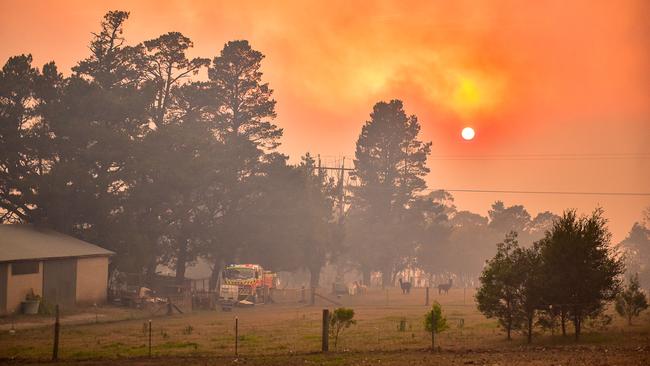
Heatwave approaches
The Bureau of Meteorology warned on Sunday that the hot weather in NSW would build over the next few days, with most of the state likely to be experiencing “widespread, severe heatwave conditions” by the end of the week.
Western Sydney Local Health District on Monday warned residents to keep well hydrated and cool to avoid heat-related illnesses and check in on elderly friends, neighbours and relatives.
“Extreme heat conditions can have serious impacts on peoples’ health,” WSLHD Centre for Population Health deputy director Christine Newman said in a statement.
Central NSW, which has been heavily affected by bushfires in recent weeks, is facing an “extreme” heatwave by Thursday, according to the bureau. Residents in the path of the Wollemi National Park fire were told it was too late to leave their homes.
QUEENSLAND
Meanwhile residents in the regional Queensland community of Mount Maria, about 75 kilometres north of Bundaberg, were told on Monday afternoon told to leave their homes as a bushfire fast approaches.
Multiple towns across the state are watching fires closely after being told to prepare to leave.
Residents at Gregory River (north of Childers), Upper Kandanga (west of the Sunshine Coast) and Kumbarilla State Forest (south west of Dalby) are all on alert.
It comes as scorching temperatures hit the state, with Brisbane equalling its record for the hottest December day at 41.2C.
With AAP

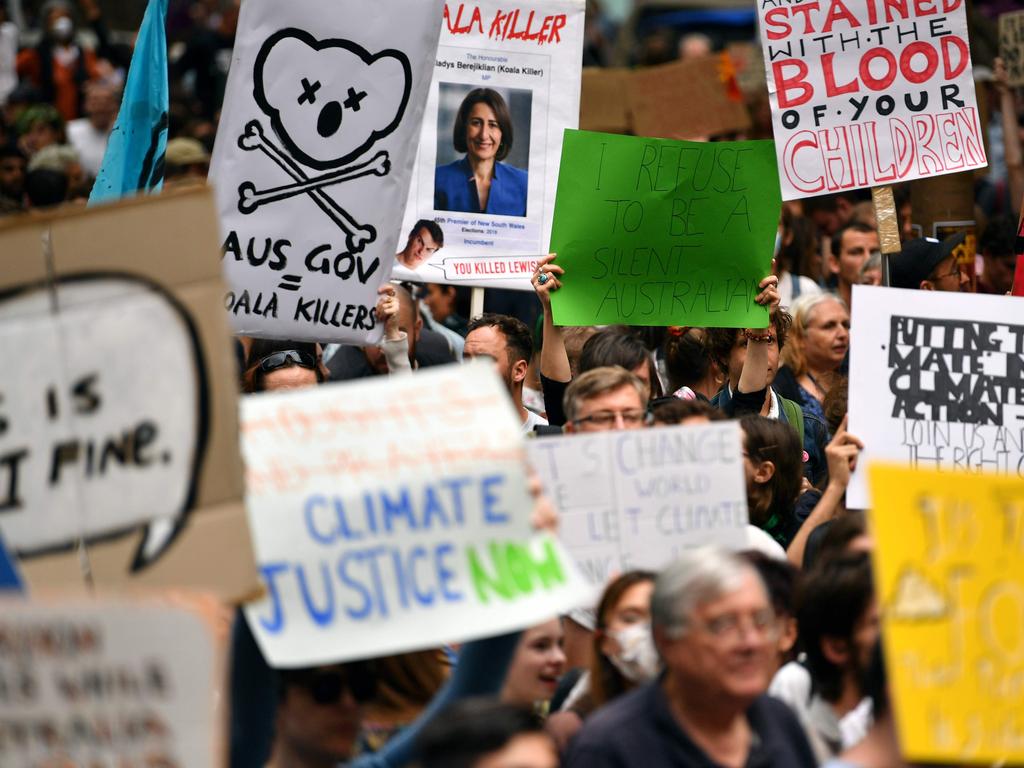


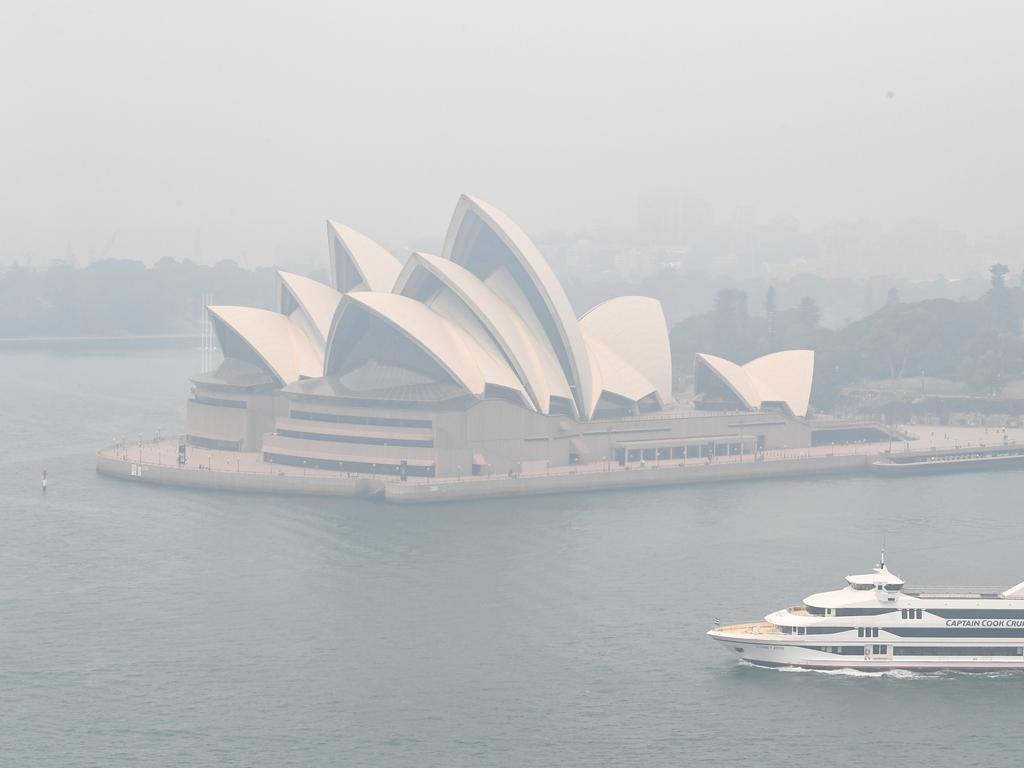


To join the conversation, please log in. Don't have an account? Register
Join the conversation, you are commenting as Logout